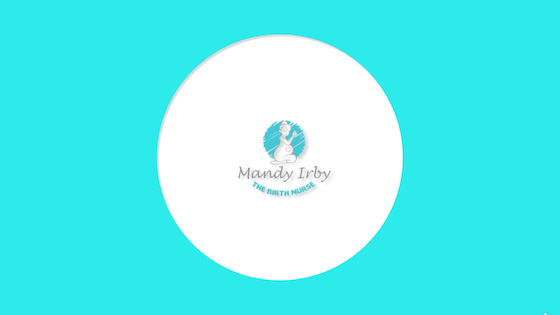| | A free, monthly newsletter with a roundup of the best the internet has to offer about mom-to-be and baby. | | | | | Issue #41 | | | | | | |  | | | | | | (www.naturalchild.org) | | | The human infant is a helpless creature at birth. He is virtually immobile, he cannot creep, walk, or speak, and is greatly limited in his ability to act with purpose. Unlike other primates, he cannot even hold on to or cling to his mother. He must be carried if he is to go from one place to another. Seventy-five per cent of his brain develops after birth. He cannot continue to live without the efforts of another human. He requires years of development before he can care for himself. A baby's helplessness and immature development requires a source of care. Nature has provided a source to match this need - the human mother. | | | | | | | | | | | (www.youtube.com) | |  | | | | | | | | (vbac.com) | | | Deciding if a VBAC is right for you - A Parent’s Guide is a comprehensive, evidence based visual guide developed to help mothers and their partners make an informed decision about vaginal birth after a caesarean (VBAC). | | | | | | | | | | | (thenaturalparentmagazine.com) | | | Four years ago I thought my daughter had a “sleep problem”. I could not understand why she wanted to sleep soundly on me for two hours but only sleep 20 minutes alone in a cot… This explanation of the “fourth trimester” and creating a “womb-like” environment really helped me to understand, surrender, and embrace those sleepy wrap cuddles. | | | | | | | | | | | (www.attachmentparenting.org) | | | The long-range vision of Attachment Parenting is to raise children who will become adults with a highly developed capacity for empathy and connection. It eliminates violence as a means for raising children, and ultimately helps to prevent violence in society as a whole. The essence of Attachment Parenting is about forming and nurturing strong connections between parents and their children. Attachment Parenting challenges us as parents to treat our children with kindness, respect and dignity, and to model in our interactions with them the way we'd like them to interact with others. | | | | | | | | | Breastfeeding Brought to you by the SACLC | | | | | | | | | (www.expectantmothersguide.co.za) | | | Immune system – Breast milk helps to mature the immune system. Responds better to vaccinations. Decreased risk of childhood cancer Skin - Less allergic eczema in breastfed infants Joints and muscles - Juvenile rheumatoid arthritis is less common in children who were breastfed Bowels - Less constipation Urinary tract - fewer infections in breastfed infants Digestive system - Less diarrhoea, fewer gastrointestinal infections in babies who are breastfeeding. Six months of exclusive breastfeeding reduces risk of food allergies. Also, less risk of Crohn’s disease and ulcerative colitis in adulthood Heart and circulation - Breastfed children have lower cholesterol Respiratory system - Breastfed babies have fewer and less severe upper respiratory tract infections, less pneumonia and less influenza Mouth - less need for orthodontics in children breastfed more than a year. Improved muscle development of face from suckling at the breast. Subtle changes in the taste of breast milk from one feed to the next prepares baby to accept a wide variety of solid foods Endocrine system - reduced risk of developing diabetes Higher IQ - Breast milk supports the growth of brain tissue Eyes - Visual acuity is higher in breastfed babies Ears - Breastfed babies get fewer ear infections So, we see breast milk is awesome so let’s understand why it is so great! It is due to something in breast milk called HMO’s – Human Milk Oligosaccharides. | | | | | | | | | | | (www.parentingscience.com) | | | What is sensitive, responsive parenting? It's really pretty simple. First, you tune into your child's emotions, concerns, and needs. That's the sensitive part. Then you provide your child with the appropriate level of support and reassurance. That's the responsive part. Simple, and very powerful. | | | | | | | | | | | (www.handinhandparenting.org) | | | Connection is essential to raise healthy, capable, successful children. But don't take my word for it. There is lots of fascinating science on the subject that makes surprisingly good reading. | | | | | | | | | | | (raisedgood.com) | | | The pain is unbearable as I sit perched on the edge of our couch, shaking as tears stream down my face. I can’t do this every two hours, I think. How can this possibly be normal? But, looking down at my five-day-old baby as he nurses I’m in awe of how my body is able to nourish him. His little blue eyes lock with mine and I recall a parenting gem I read while I was pregnant. A newborn’s range of vision is 8-15 inches, which happens to be the distance between a mother and baby’s face while breastfeeding. It’s thought this distance most likely evolved because of breastfeeding. It brings me comfort and helps me dig a little deeper, knowing not only am I feeding my baby but also nurturing his evolving vision. | | | | | | | | | | | (evidencebasedbirth.com) | | | Stay up to date on the latest Covid -19 research with regards to pregnancy, birth and breastfeeding | | | | | | | | | Did you enjoy this issue? | | | | | | | | | |